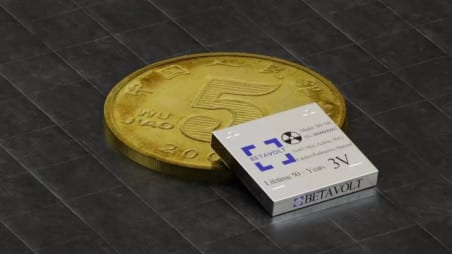Betavolt, a Chinese startup, is making waves in the energy industry with its groundbreaking achievement in nuclear battery technology. This innovation promises to revolutionize the way we power electronic devices, particularly smartphones. The company claims to have developed a nuclear battery capable of providing power for smartphones for an impressive 50 years without the need for traditional charging methods.
The key breakthrough lies in Betavolt’s ability to miniaturize atomic energy, fitting an astounding 63 nuclear isotopes into a module smaller than a coin. This marks a significant leap forward in energy innovation, opening doors to a wide range of applications beyond smartphones. The battery harnesses the energy released by decaying isotopes, converting it into electricity.
The potential applications of Betavolt’s nuclear battery are vast, ranging from phones and drones to aerospace, AI equipment, medical devices, microprocessors, advanced sensors, and even small robots. The startup is currently in the pilot testing stage, with plans to produce a battery with 1 watt of power by 2025. The compact size of the battery allows for scalability, enabling the connection of multiple units to generate more power.
Betavolt’s nuclear batteries boast several impressive features, including lightweight construction, a long service life, and high energy density. Their versatility extends to extreme temperatures, from -60 to 120 degrees Celsius, making them suitable for various environments. The modular design facilitates the connection of multiple units, potentially impacting automotive technology and AI systems.
As Betavolt progresses towards commercial production, the implications of this next-generation power solution are far-reaching. The technology not only addresses the growing demand for long-lasting, efficient energy sources but also holds promise for transforming industries reliant on portable power, ushering in a new era of sustainable and compact energy solutions.


